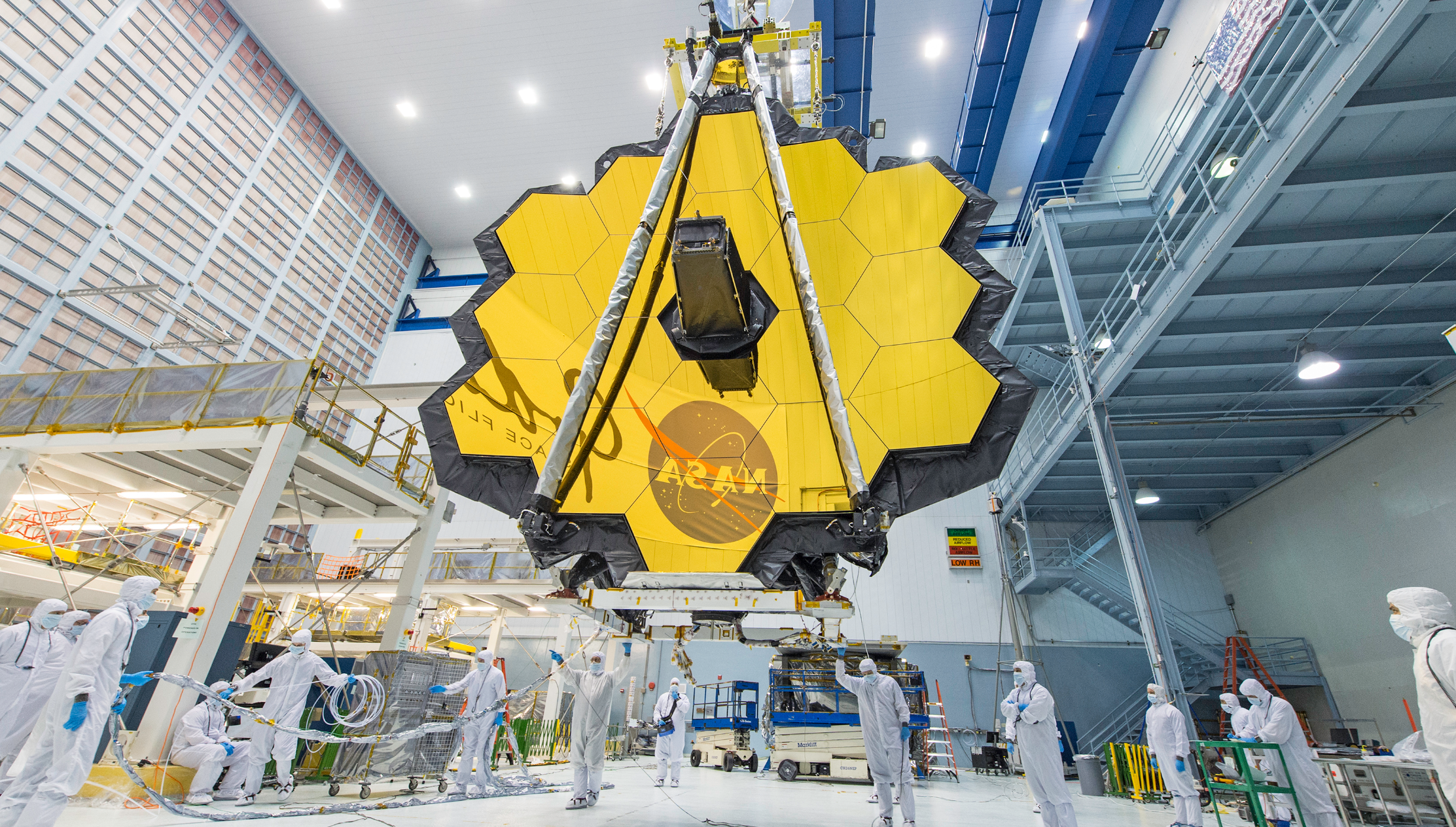Unveiling Structural Secrets of Natural Frequencies with Finite Elements
Finite element analysis reveals the complex behaviors of physical objects, helping scientists and engineers design and build everything from space telescopes to retail products
Did you know that one of the most sophisticated machines ever built, The James Webb Space Telescope (JWST), failed its first “shake test?” This test was conducted late in the development of the telescope (after it was mostly built), and it took many millions of dollars to fix.
Physical validation tests such as shake tests can tell engineers whether a structure will survive intense vibrations or other stresses. But they don’t tell engineers anything about the failure mechanisms.
To learn the “how,” engineers routinely turn to simulation, specifically structural dynamics analysis with finite element analysis in the case of NASA’s Webb telescope, to understand the mechanisms that might lead to failures.
In this post, I’ll provide an in-depth look into structural dynamics analysis and its critical role for ensuring machines and products can perform as intended.
Structural Dynamics Analysis: A Cornerstone of Modern Engineering
In the vast world of engineering, structural dynamics analysis shines as an essential discipline pivotal to the design and development of resilient structures. This analysis dives deep into the complexities of how structures and systems react when subjected to dynamic loads and vibrations. The primary goal? To optimize safety, performance, and longevity.
At its heart, structural dynamics analysis is about prediction and understanding. It seeks to forecast how structures will react under forces like vibrations, oscillations, and sudden impacts. This capability is invaluable, allowing engineers to gauge potential vulnerabilities, refine designs, and enhance the safety and dependability of various engineering systems.
Modal Analysis: More Than Just the Basics
Modal analysis is often considered the starting point and the DNA test for structures. By identifying a structure’s natural frequencies, mode shapes, and damping traits, engineers can delve into the essence of a system’s dynamic behavior. This foundational knowledge not only offers insights into potential design improvements but also flags potential problem areas that might resonate under specific conditions.
Harmonic Analysis: The Symphony of Structures
Every structure has its rhythm, its unique response to external forces or vibrations. Harmonic analysis helps engineers decode this dance. By meticulously studying a structure’s response, engineers can discern dynamic amplitudes and phase shifts across a spectrum of frequencies. This deep dive into the structure’s behavior aids in understanding resonance patterns, offering strategies to refine and reinforce the design.
Transient Analysis: Capturing Moments in Time
Transient analysis is akin to capturing lightning in a bottle. It offers snapshots of how a structure might react to sudden and fleeting loading condition. This insight is invaluable, providing a window into a structure’s behavior, revealing key parameters like stress distribution, displacement, and potential fatigue points.
Random Vibration Analysis: Preparing for the Unpredictable
Life is unpredictable, and so are the forces that structures might face. Random vibration analysis is the tool that prepares structures for these uncertainties. By studying reactions to spontaneous, real-world stimuli, engineers can gauge a structure’s resilience, ensuring it remains robust amidst unforeseen challenges.
The Digital Era: Revolutionizing Structural Dynamics Analysis
The Digital Era has brought forth an unprecedented wave of innovations that have reshaped countless sectors, and structural dynamics analysis is no exception. With the rapid advancement of technology, how we approach, analyze, and optimize structures is undergoing a seismic shift.
Before the digital revolution, testing a structure’s resilience and response to dynamic forces often involved costly and time-consuming physical models and prototypes. Now, we can model diverse scenarios digitally, which is much more cost-effective.
Virtual Prototyping: Engineers can swiftly create intricate virtual models of structures, iterating and refining designs on-the-fly without the constraints of physical materials.
Diverse Scenarios: These virtual structures can be subjected to many simulated conditions, from earthquakes to high-velocity winds, allowing engineers to foresee potential challenges and engineering structures to withstand them.
Cost-Efficiency: By identifying and addressing issues in the virtual realm, engineers can significantly reduce the risks and costs associated with real-world testing and construction.
Integration of Artificial Intelligence and Machine Learning: The Predictive Powerhouse
Integrating artificial intelligence (AI) and machine learning (ML) into structural dynamics analysis represents a paradigm shift. By harnessing the power of data and computational algorithms, these technologies offer enhanced predictive capabilities, optimization avenues, and real-time insights.
Data-Driven Predictive Modeling
Historical Data Analysis: AI systems can sift through vast amounts of historical structural data, identifying patterns and trends that might be imperceptible to human analysts. This supports the prediction of structural behaviors under various dynamic loads based on past performance and failures.
Dynamic Adjustments: Machine learning models excel in environments with constant data influx. As new data on structural performances under dynamic conditions becomes available, ML algorithms adapt and refine their predictions, ensuring models remain current and accurate.
Iterative Design Solutions: ML algorithms can iterate through thousands of design variations rapidly, determining optimal configurations that maximize safety and performance under dynamic conditions.
Real-Time Monitoring and Feedback
Sensor Integration: When integrated with real-time sensors on existing structures, AI systems can monitor structural health, predicting potential issues before they become critical, such as, detecting minute vibrations or material fatigue that might indicate a larger problem.
Predictive Maintenance: Using advanced sensors and data analytics, this approach forecasts potential failures or issues before they manifest, allowing timely interventions. Instead of relying on scheduled maintenance or reactive repairs, predictive maintenance analyzes real-time and historical data to pinpoint when maintenance is genuinely needed. The result: enhanced equipment longevity, reduced downtime, and significant cost savings.
In essence, predictive maintenance transforms maintenance from a routine task into a strategic, data-driven initiative, ensuring optimal performance and reliability.
Automated Analysis: Post-simulation, AI can automatically analyze results, highlighting areas of concern and suggesting potential design modifications.
The Cloud-Driven Future in Structural Dynamics
Integrating cloud computing into structural dynamics analysis signifies a shift from localized, constrained engineering to a more global, scalable, and collaborative approach. As structures become more complex and the challenges more multifaceted, the cloud will be instrumental in providing the tools, resources, and collaborative spaces required to help researchers, engineers, scientists and designers keep pace.
It’s a future where structures are not silent. They will actively communicate their health, helping proactively address potential issues are addressed before there is a problems. The immense power of the cloud ensures that data-driven decisions are made swiftly and efficiently.
As we embrace this cloud-driven future, we’re not just building structures. We’re creating intelligent, responsive, and resilient ecosystems that are primed for the challenges of the modern world.
Navigating the Future of Structural Dynamics Analysis
The interplay of structures under dynamic forces remains central to engineering’s most pressing challenges, as underscored by the James Webb Space Telescope’s initial trials. However, with the fusion of traditional engineering insights and modern digital tools, from AI to cloud-based solutions, we’re entering an era of unparalleled precision and foresight.
The future of structural dynamics analysis doesn’t just promise resilient structures. It envisions adaptive, evolving structures. By harnessing this potential, we pave the way for a safer, more adaptable world.
Learn how Rescale’s cloud-based platform provides the computational power for structural dynamics.
Talk to our HPC engineering experts today.







